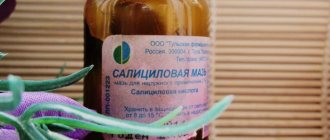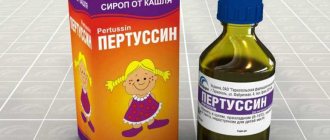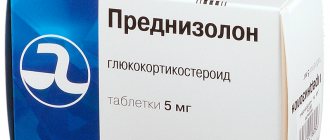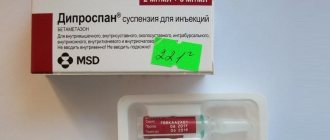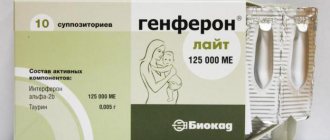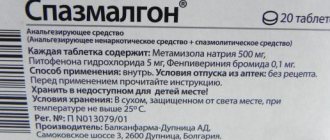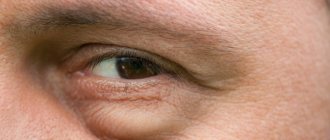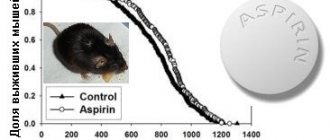Rinza, instructions for use, calls this drug a combination medication, by taking which you can quickly relieve unpleasant cold symptoms. Catarrhal symptoms of influenza and other viral infections are a signal for a person that he needs to put things aside and stay at home in order to gain strength and carry out adequate drug therapy.
However, symptoms in the form of elevated body temperature, coughing, sneezing, headaches and joint pain are not so easy to tolerate, so there is always a need to use medications that relieve these manifestations. The patient can take several medications at once for symptomatic therapy, or use one medicine that relieves a whole set of cold symptoms, which is Rinza.
pharmachologic effect
Rinza tablets, which help with pain symptoms and colds, have a complex effect. This becomes possible due to the inclusion of 4 active substances in the composition of the medicine.
Thus, paracetamol creates a thermoregulatory and analgesic effect, reduces pain symptoms and temperature. Chlorphenamine provides an antiallergic effect, relieves swelling of the respiratory tract, itching, hyperemia, and exudative symptoms.
The presence of phenylephrine gives a vasoconstrictor result, reducing hyperemia and swelling. Thanks to caffeine, a stimulating effect on the central nervous system is manifested, the patient’s drowsiness disappears, intellectual and physical performance increases, and fatigue disappears.
Indications for treatment, what Rinza helps with
Rinza provides symptomatic treatment of “colds”, acute respiratory infections, including influenza. Acute respiratory diseases are caused by viruses, bacteria,
, as well as groups of various pathogens. Among the acute respiratory infections, influenza is undoubtedly the most important. Source
With influenza, three main syndromes are observed in the clinical picture - syndrome
, catarrhal syndrome and fever syndrome. The severity of this disease is primarily determined by the presence and severity of intoxication syndrome. The flu begins acutely, often with chills. Body temperature reaches from 38 to 40 degrees. General syndrome
manifested by weakness, adynamia,
, pain in muscles, eyeballs,
. Patients experience headache, dizziness,
, occasionally observed
and nasal
. Damage to the respiratory tract is manifested by a sore throat, dry cough, hoarse voice, nasal congestion and
. After 3-4 days the cough becomes wet.
Elevated body temperature is the first sign of the body's fight against the infectious agent. The reason why body temperature rises is the entry into the blood of substances that affect the thermoregulation center in the central nervous system.
Very high temperatures can lead to overheating of internal organs and convulsions. An antipyretic, and in this case paracetamol, is a drug that inhibits the formation of prostaglandins (substances that cause high fever).
Chills are a condition of the body that is characterized by the occurrence of spasm of the peripheral vessels of the skin without an increase in blood pressure. This condition and elevated body temperature are interconnected, as they are reactions of the immune system to infection of the body by viruses and bacteria.
Nasal congestion occurs when the infectious agent multiplies in the epithelial cells of the upper respiratory tract. As a result of the destruction of these cells, the function of the mucous membrane is disrupted.
Also in the mucous membrane there are cells that produce mucus. When the nasal mucosa is damaged, the activity of these cells increases, resulting in an increase in mucous discharge.
Elevated body temperature is a protective reaction of the human body to an infectious and inflammatory process. As the temperature rises, the body's immune system is activated, and infectious agents multiply more slowly.
Each patient is individual and tolerates an increase in body temperature differently. For some, a temperature of 37.5 degrees is already critical, while others remain active and productive even at 39 degrees.
https://www.youtube.com/watch{q}v=xlwN0G1Dq8M
It should be remembered that paracetamol as an antipyretic agent begins to show its effect starting at a temperature of 38 degrees. Accordingly, the drug Rinza is used in cases where the body temperature is 38 degrees or higher.
Side effects
The medicine "Rinza", the instructions and patient reviews indicate this, is well tolerated if the treatment regimen is followed. In some cases, side effects from various body systems may occur:
- renal colic;
- papillary necrosis;
- pancytopenia;
- dry mouth;
- hives;
- pain in the epigastric region;
- anemia;
- nausea, vomiting;
- methemoglobinemia;
- angioedema;
- itching;
- glucosuria;
- increased blood pressure;
- anemia;
- accommodation paresis;
- increased intraocular pressure;
- dizziness;
- skin rash;
- thrombocytopenia;
- interstitial nephritis;
- increased excitability;
- tachycardia;
- bronchial obstruction;
- pupil dilation;
- agranulocytosis.
Contraindications
- blood diseases;
- decrease in the content of leukocytes or hemoglobin in the blood;
- hypersensitivity to the drug and its components;
- pregnancy and lactation;
- diabetes;
- prostate hyperplasia with difficulty urinating;
- severe forms of atherosclerosis of heart vessels;
- insomnia;
- severe forms of heart failure, including arrhythmias;
- epilepsy and convulsive conditions;
- congenital increase in bilirubin content in the blood;
- pheochromocytoma;
- pyloroduodenal obstruction;
- severe arterial hypertension;
- age up to 15 years;
- hypersensitivity to xanthine derivatives (theobromine, theophylline);
- hyperfunction of the thyroid gland;
- chronic lung diseases with obstructive symptoms;
- Dubin-Johnson syndrome;
- alcohol addiction;
- bronchial asthma;
- severe forms of renal and liver failure;
- increased intraocular pressure and glaucoma.
Do not use with antidepressants, beta blockers, monoamine oxidase inhibitors (MAOIs) and within six months after stopping taking MAO inhibitors.
Analogues of the drug "Rinza"
Analogs have identical active substances:
- “Rinicold Ho.
- "Rinzasip with vitamin C."
- "Rinza hotsip with vitamin C."
Drugs exhibit similar effects:
- "Rinicold."
- "Spazgan".
- "Upsarin UPSA."
- "Ibuklin."
- "Aspirin".
- Strimol Plus.
- "Aquacitramon."
- "TeraFlu Extra".
- "Stopgripan forte".
- "Brustan".
- "Naklofen"
- "AntiFlu Kids"
- "Paracetamol".
- "Naklofen Duo".
- "Ibuprofen."
- "Antigrippin ANVI".
- "Maxicold".
- "Antigrippin".
- "Revalgin."
- "Fervex for children."
- "TeraFlu".
- "Influnet".
- "AnviMax".
- "Hydrovit".
- "Pentabufen."
- "Flucoldex N".
- "Aspirin Complex".
- "Ibuklin Junior".
- "Girel".
- "Piralgin".
- "Nalgesin".
- "Voltaren Acti".
- "Ketonal".
- "A cold."
- Advil for children.
- "MIG 400".
- "Efferalgan with vitamin C."
- "GrippoFlu".
- Coldrex Junior.
- "Khairumat."
- “I took it.”
- "Hydrovit forte".
- "Caffetin Cold"
- "Efferalgan."
- "Fervex".
- "Febricet."
- Coldrex MaxGrip.
- "Brufen."
By
Applications and dosages
Rinza should be taken orally with plenty of water. The tablet should be taken 30 minutes after eating. The duration of use of the drug should not exceed 5 days. If the therapeutic effect is not observed, the drug is discontinued.
for children
The drug is not used in pediatric practice. The composition may harm the child's well-being.
for pregnant women and during lactation
Rinza is not prescribed to women during pregnancy and nursing mothers. The active ingredients of the drug composition are absorbed into the systemic bloodstream and can harm the patient’s health.
This is interesting!
Rinza and some analogues contain caffeine, which is an alkaloid found in coffee beans, tea leaves and kola nuts. The substance directly affects the central nervous system, providing a psychostimulating, cardiotonic and analeptic effect. As a result, physical and mental activity increases, gas exchange in the lungs improves, low blood pressure normalizes, and tissue metabolism is activated.
The pharmacological effects of caffeine help get rid of drowsiness and fatigue, increase reaction speed, and improve mental activity. Interestingly, stimulation of the brain occurs only when using small doses of the drug. In high dosages, the opposite effect occurs, which can cause disturbances in the respiratory and cardiovascular systems.
General information about the drug
Cold powder is characterized by thermoregulatory, analgesic, vasoconstrictor and antihistamine effects. It quickly and effectively relieves the symptoms of ARVI, helps to increase the tone of the vascular walls. Since the combination drug contains several main components, it has a wider spectrum of action.
Drug group, INN, scope of application
The drug is a representative of a pharmacological group consisting of medications intended for the symptomatic elimination of signs of colds and ARV infections. Manufacturers used caffeine, paracetamol, phenylephrine hydrochloride and pheniramine maleate as basic active ingredients. These components determine the mechanism of action of the cold powder.
Dosage forms and estimated price
In Russian pharmacies, the drug is sold in the form of a fine orange powder intended for the preparation of an anti-cold solution. It is packaged in a sachet with a dosage for single use. Rinzasip comes in several flavors, so each patient will be able to choose a medication to suit their taste. On average, a package is sold at a price of 160 rubles (No. 5), but the cost of Rinzasip may vary slightly depending on the region of residence.
| Pharmacy name | Cost, rub.) | ||
| №5 | №10 | ||
| 36,6 | 182 | 283 | |
| Dialogue | 145 | 241 | |
| Europharm | 190 | 299 | |
| Live pharmacy | 166 | 254 | |
| WER.RU | 160 | 265 | |
Special Recommendations
When treating with this medication, it is recommended to refrain from drinking alcoholic beverages, sleeping pills and anxiolytic medications. This medicine should not be used in combination with other drugs that contain paracetamol: this may result in an overdose. During the period of therapy, it is necessary to refrain from driving and performing work that requires the patient to have a high concentration of attention and speed of psychomotor reactions of the body. Contraindications to the use of Rinza must be taken into account in advance.
Reviews
Numerous reviews about this drug left by patients and doctors are, in most cases, positive. There are virtually no reports of overdose cases.
Not everyone, of course, knows the indications for using Rinza tablets. Patients who have used this medication to eliminate cold symptoms note that the drug helps reduce the likelihood of developing the disease if such medications are taken when the first symptoms occur. At the same time, nasal congestion is quickly eliminated, soreness in the throat becomes less pronounced, and the elevated temperature decreases. At the height of the disease, according to patients, using this remedy can significantly alleviate the condition, which is characterized by fever and chills.
Powder
As for the medicine in powder form "Rinzasip", it should be taken with plenty of water or other liquid 1-2 hours after meals. To prepare solutions, the contents of the sachet must be filled with hot water and mixed thoroughly until the powder dissolves. If necessary, you can add sugar or honey to the solution. Adult patients and adolescents over 15 years of age are prescribed 1 sachet of medication 3-4 times a day. It is important to observe the interval between using the powder, which is 4-6 hours. The maximum dosage is 4 sachets per day, duration of administration is 5 days. If you do not follow the contraindications to Rinza in powder or tablets, you can get extremely negative symptoms.
Do not overdo it
Rinza receives positive reviews only when the drug was taken on the recommendation of a doctor, and the dosage and regimen were observed very strictly. But if the drug was taken almost uncontrollably, and any ailment was relieved without a break of 6-8 hours, an overdose occurs.
First of all, this is facilitated by the content of paracetamol in it. This medicinal substance must be used carefully, in a strictly specified dose and regimen, as it negatively affects the functioning of the liver, including hepatonecrosis. And the use of phenylephrine and caffeine in large quantities causes dizziness, headaches, bradycardia and other pathological conditions. The conclusion is clear - “Rinza” must be used in strict accordance with the instructions.
Overdose symptoms
According to the instructions for the drug "Rinza", an overdose of this medication in all forms of release is in most cases due to the presence of paracetamol in the composition and occurs, as a rule, after taking this substance in high doses. Among the possible manifestations of an overdose, one should note an increase in prothrombin time, an increase in the functions of liver transaminases, hepatonecrosis, pale skin, dyspeptic symptoms, and anorexia. If you suspect an overdose, you should immediately consult a specialist. As therapy, gastric lavage with further administration of the sorbent is usually recommended. Subsequently, symptomatic treatment is also prescribed, including the administration of methionine after 8-9 hours, and acetylcysteine after 12 hours.
We have given a list of indications for the use of Rinza above. Next, let's look at some recommendations.
Tablets or syrup
Rinza, used for patients from the age of fifteen, comes in tablet form. In addition, children in this age category can consume Rinzasip powder. And children after 6 years old can use a powder called Rinzasip Kids.
How many tablets can a child take per day? Experts do not recommend using adult dosages of medications to treat children under 15 years of age. Rinza tablets cannot be divided into two or four parts, because the concentration of active ingredients in this case may be uneven. Such actions can provoke the development of overdose symptoms and significantly worsen the person’s condition.
The adult form of the drug Rinzasip is not suitable for children aged 6 to 15 years, because it contains caffeine, which is not indicated for use in children due to its high ability to stimulate central nervous system excitation.
The use of Rinzasip Kids powder for children under 6 years of age is prohibited. For them, the dosage of paracetamol may be too high, which can seriously affect their well-being, causing a dangerous overdose.
Special children's syrups (for example, Nurofen, Panadol) should be used to treat children under 6 years of age, for which there is a special dosing system based on the weight and age characteristics of the patient.
Synonyms of nosological groups
| Category ICD-10 | Synonyms of diseases according to ICD-10 |
| J01 Acute sinusitis | Inflammation of the paranasal sinuses |
| Inflammatory diseases of the paranasal sinuses | |
| Purulent-inflammatory processes of the paranasal sinuses | |
| Infectious and inflammatory disease of ENT organs | |
| Sinus infection | |
| Combined sinusitis | |
| Exacerbation of sinusitis | |
| Acute inflammation of the paranasal sinuses | |
| Acute bacterial sinusitis | |
| Acute sinusitis in adults | |
| Subacute sinusitis | |
| Acute sinusitis | |
| Sinusitis | |
| J06 Acute upper respiratory tract infections of multiple and unspecified localization | Bacterial infections of the upper respiratory tract |
| Bacterial respiratory infections | |
| Pain due to colds | |
| Pain in infectious and inflammatory diseases of the upper respiratory tract | |
| Viral respiratory disease | |
| Viral respiratory tract infections | |
| Inflammatory disease of the upper respiratory tract | |
| Inflammatory diseases of the upper respiratory tract | |
| Inflammatory diseases of the upper respiratory tract with difficult to separate sputum | |
| Inflammatory diseases of the respiratory tract | |
| Secondary infections with influenza | |
| Secondary infections due to colds | |
| Influenza conditions | |
| Difficulty secreting sputum in acute and chronic respiratory diseases | |
| Upper respiratory tract infections | |
| Upper respiratory tract infections | |
| Respiratory tract infections | |
| Respiratory and lung infections | |
| ENT infections | |
| Infectious and inflammatory diseases of the upper respiratory tract | |
| Infectious and inflammatory diseases of the upper respiratory tract and ENT organs | |
| Infectious and inflammatory diseases of the upper respiratory tract in adults and children | |
| Infectious and inflammatory diseases of the upper respiratory tract | |
| Infectious inflammation of the respiratory tract | |
| Respiratory tract infection | |
| Qatar of the upper respiratory tract | |
| Catarrhal inflammation of the upper respiratory tract | |
| Catarrhal disease of the upper respiratory tract | |
| Catarrhal phenomena from the upper respiratory tract | |
| Cough in diseases of the upper respiratory tract | |
| Cough with a cold | |
| Fever due to influenza | |
| ARVI | |
| acute respiratory infections | |
| Acute respiratory infection with symptoms of rhinitis | |
| Acute respiratory infection | |
| Acute infectious-inflammatory disease of the upper respiratory tract | |
| Acute cold | |
| Acute respiratory disease | |
| Acute respiratory disease of influenza nature | |
| Sore throat or nose | |
| Cold | |
| Colds | |
| Colds | |
| Respiratory infection | |
| Respiratory viral infections | |
| Respiratory diseases | |
| Respiratory infections | |
| Recurrent respiratory tract infections | |
| Seasonal colds | |
| Seasonal colds | |
| Frequent colds and viral diseases | |
| J30 Vasomotor and allergic rhinitis | Allergic rhinopathy |
| Allergic rhinosinusopathy | |
| Allergic diseases of the upper respiratory tract | |
| Allergic respiratory diseases | |
| Allergic runny nose | |
| Allergic rhinitis | |
| Allergic rhinitis seasonal | |
| Vasomotor rhinitis | |
| Long-term allergic rhinitis | |
| Year-round allergic rhinitis | |
| Year-round allergic rhinitis | |
| Year-round or seasonal allergic rhinitis | |
| Year-round rhinitis of allergic nature | |
| Runny nose, vasomotor allergic | |
| Exacerbation of hay fever in the form of rhinoconjunctival syndrome | |
| Acute allergic rhinitis | |
| Swelling of the nasal mucosa | |
| Swelling of the nasal mucosa | |
| Swelling of the nasal mucosa | |
| Swelling of the nasal mucosa | |
| Swelling of the nasal mucosa | |
| Hay fever | |
| Persistent allergic rhinitis | |
| Rhinoconjunctivitis | |
| Rhinosinusitis | |
| Rhinosinusopathy | |
| Seasonal allergic rhinitis | |
| Seasonal allergic rhinitis | |
| Hay rhinitis | |
| Chronic allergic rhinitis | |
| R50 Fever of unknown origin | Hyperthermia malignant |
| Malignant hyperthermia | |
| R51 Headache | Head pain |
| Pain due to sinusitis | |
| Pain in the back of the head | |
| Headache | |
| Headache of vasomotor origin | |
| Headache of vasomotor origin | |
| Headache with vasomotor disturbances | |
| Headache | |
| Neurological headache | |
| Serial headache | |
| Cephalgia | |
| R60.0 Localized edema | Allergic swelling of the larynx |
| Local swelling | |
| Local swelling | |
| Local swelling | |
| Localized edema | |
| Edema of the lower extremities | |
| Swelling due to inflammation of the tendon sheaths | |
| Oral swelling | |
| Swelling after dental procedures | |
| Swelling of the nasopharyngeal mucosa | |
| Swelling of the nasopharyngeal mucosa | |
| Edema of traumatic origin | |
| Edema of a traumatic nature | |
| Swelling due to injuries | |
| Post-traumatic swelling | |
| Post-traumatic edema | |
| Post-traumatic swelling of soft tissues | |
| Traumatic edema |
Substitutes at a low price
If you want to find out what cheaper analogues of the drug Rinza are available, the pharmacist at your nearest pharmacy will provide you with a list of such medications that are available. Before looking for an inexpensive substitute, you should find out about the price of the original medicine. The drug "Rinza" is available in a package of 10 tablets. The average cost of this drug will vary from 140 to 180 rubles. It all depends on where you live. As you can see, the drug itself is relatively inexpensive and accessible. Is it worth finding out which analogues of the drug “Rinza” are cheaper? List of drugs you are interested in, with prices:
- “Paracetamol” (20 rubles);
- “Acetylsalicylic acid” (30 rubles);
- “Ibuprofen” (50 rubles);
- "Fervex" (100 rubles);
- “Antigrippin” (40 rubles).
All of these substitutes have the same effect on the human body as the original product. However, their composition is very different. Some medications do not contain at all the components that are present in the tablets in question.
Compatibility with other drugs
Serious harm to a person who has chosen Rinza for treatment can be caused by an overdose or interaction of this medicine with other drugs (provided that taking medications together is prohibited).
The instructions contain information about drug interactions between Rinza and other drugs:
- with halothane, increases the risk of developing ventricular arrhythmia;
- with monoamine oxidase inhibitors, sedatives, ethanol, leading to an increase in their effect on the body;
- with antidepressants, antiparksonian drugs, antipsychotic drugs, phenothiazine derivatives, increase the likelihood of developing adverse reactions (dry mouth, urinary retention, disruption of the digestive system;
- with tricyclic antidepressants: leads to increased adrenomimetic effects of phenylephrine;
- with glucocorticosteroids: increases the risk of developing glaucoma;
- with monoamine oxidase inhibitors, furazolidone leads to increased agitation and the development of a hypertensive crisis;
- with diuretics – leads to a decrease in their effectiveness;
- with ethanol – increases the effect of antihistamines;
- with barbiturates, rifampicin, carbamazepine: increases the toxic effects of paracetamol.
RINZA tablets instructions, composition, price How to take RINZA for adults for colds, flu and ARVI
CompositionWhat is RINZA? This is a remedy that helps eliminate the main symptoms of flu and colds. It helps eliminate the main symptoms and helps to quickly cope with the disease. It acts faster than other drugs.1 Description of the drug This drug is round, flat, pink tablets with white and dark pink inclusions, the edges are beveled. There is a dividing line on one side. A cardboard pack contains 10 tablets. The medicine is packaged in blisters. Each pack also contains instructions for using RINZA tablets. The drug should be stored out of the reach of children, protected from light, in a dry place at a temperature not exceeding 25 °C. The medicine RINZA for colds has a shelf life of 3 years. After this period, you cannot take pills. Composition of RINZA tablets The composition of RINZA (one tablet) includes the following active ingredients: 2 mg of chlorphenamine maleate; 10 mg phenylephrine hydrochloride; 30 mg caffeine; 500 mg paracetamol. RINZA contains excipients: corn starch, colloidal silicon dioxide, corn starch (for 20% paste), K30 (povidone), magnesium stearate, sodium methyl parahydroxybenzoate, sodium carboxymethyl starch (type A), talc, crimson dye (Ponceau 4R). Price The cost of RINZA tablets for ARVI in different pharmacies in Russia varies. This mainly depends on the region in which the tablets are sold. You can view average market prices here
You can find out the cost of RINZA tablets and get up-to-date information about the availability of the drug in pharmacy chains throughout Russia.
Application Action Release form Manufacturer The use of RINZA tablets is contraindicated: For severe atherosclerosis of the coronary arteries, arterial hypertension, portal hypertension, diabetes mellitus; while taking MAO inhibitors, tricyclic antidepressants, beta-blockers, etc.; the use of other products that contain substances included in RINZA; pregnancy and lactation; with high sensitivity to paracetamol and other components that make up the drug; with alcoholism; under the age of 15 years. You should take the medicine with caution if you have the following diseases and conditions: hyperthyroidism; pheochromocytomas; bronchial asthma; chronic obstructive pulmonary disease; emphysema; chronic bronchitis; deficiency of glucose-6-phosphate dehydrogenase; hemolytic anemia; blood pathologies; acute hepatitis; congenital hyperbilirubinemia (Gilbert, Dubin Johnson and Rotor syndromes); renal and/or liver failure; pyloroduodenal obstruction; stenosing ulcer of the duodenum and/or stomach; epilepsy; angle-closure glaucoma; prostatic hyperplasia. You should also use the drug with caution while taking medications that can have a negative effect on the liver.
Pharmacology
The instructions for use of Rinza position the drug as a combination drug, since all its active ingredients have different effects on the body.
Paracetamol acts as an analgesic and antipyretic. For colds, this substance helps reduce headaches, muscle and joint pain, sore throat, and also lower body temperature.
It is quickly absorbed and binds to plasma proteins, reaching maximum concentration in the blood within 30-60 minutes after administration.
The caffeine in the medicine helps improve performance, relieve fatigue and drowsiness by stimulating the nervous system. It also accelerates and enhances the effect of paracetamol.
Phenylephrine helps ease nasal breathing and relieve swelling in the throat due to its vasoconstrictor effect, but may cause a slight increase in blood pressure.
Chlorphenamine also helps relieve swelling and hyperemia of the mucous membranes. Being a histamine receptor blocker, the substance also eliminates itching and discomfort in the eyes and nose. The substance also reduces the secretion of mucus in the nasopharynx, relieves spasm of the bronchi and smooth muscles, and also has a mild sedative effect.

